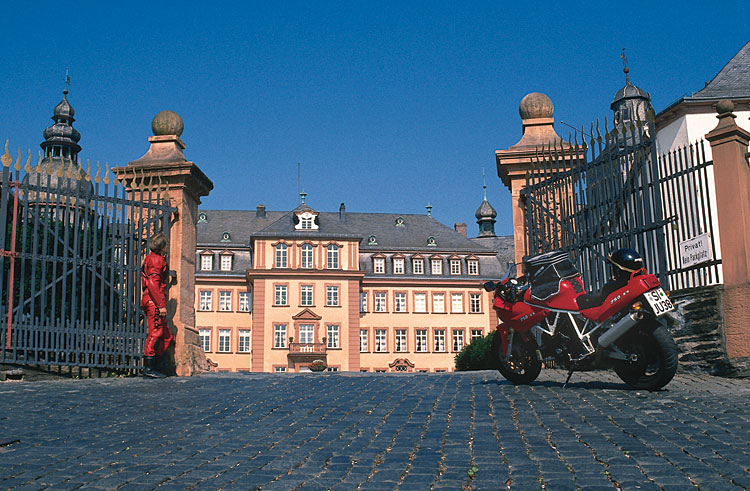Germany: Home Run Siegerland-Wittgenstein

Craftsmen, farmers and even princes have always lived a tough and meager life at the edge of the Rothaargebirge (Red-Hair Forest). This bare-bones existence is what supposedly made them a reticent and stubborn lot. On a trip through his former homeland, Andi Seiler tried to find out if these character traits still held true.
My nice dreams suddenly end when loud babble and chatter wakes me from an early afternoon nap. I struggle to get oriented. Surrounded by two dozen little human eyes, I feel a little like Gulliver waking on the shoreline of Lilliput. It takes me a while to understand but I finally realize it's simply a bunch of kids on a class trip to see the charcoal kiln near Walpersdorf, right next to my napping spot. The class is still waiting for the operator of the kiln to arrive and introduce them to this traditional craft, a fairly typical one in this area.
The area I used to call home, Siegerland-Wittgenstein, is right in the middle of Germany, almost halfway between Cologne and Frankfurt. Years ago I said goodbye and left for the States. But still your home country always stays in your mind, and since I was visiting anyway I decided to take a trip through this wonderful expanse of farmland and forests. It's June, probably the best time for a visit, and the trees and meadows are green.

From Lilliput to Brobdingnag
Well, I wanna hit the road again but I've promised the teacher to stop the Ducati at the home of the kiln operator to remind him of his appointment. It's just a few kilometers down the road. I ring the bell but no one responds. Right next to the house is a sawmill and the gate is wide open, so I step in and call out, "Hello." All of a sudden a guy the size of Arnold Schwarzenegger draws himself up to his full, Brobdingnagian height in front of me. "Take a deep breath, Andi," I'm telling myself. It takes a while to explain why I'm here. Or, let's say, it takes him a while to understand what I'm stuttering. But when comprehension dawns, he puts a nice smile on his face and tells me he will take care of the class. Mission accomplished.
I get back on the historical Eisenstrasse, which got its name from 2,500 years of iron ore mining. The road takes me to the source of the Sieg River and the little village of Lahnhof. I make a right turn and follow a tiny road to an even smaller village called Heiligenborn. The road is still paved with lots of turns as I make my way through the dense forest. The fresh smell of oaks and fir trees invigorates the mind. The road follows the little creek Ilsebach. Shortly before Feudingen I take the right turn to Banfe and from there to Hesselbach and Boxbach.

Bikers are Welcome Here
A hotel with a fine restaurant defines the village Boxbach. There's little else. Many hikers come here on weekends to enjoy meals from their famous menu featuring "Forelle blau" or "Forelle Müllerin," trout bred in the small lake near the hotel and transformed into piscatorial delights, fried or cooked, with potatoes as a side dish. I'm getting hungry. But the wide-shouldered owner and chef is a rather tall, taciturn type I don't expect to hear any special recommendations from, so I stick with à la carte offerings to stay out of trouble. The new, improved, non-confrontational Andi. Trout is one of my favorites anyway. In between servings, he surprises me when he comes around to mention that motorcyclists are always welcome. Good to know, sir. His food is great and this lovely place right in the middle of the woods is just perfect for a break.

With a loaded stomach I'm back on the road again and ride the Duc to Bad Laasphe and its castle, Schloss Wittgenstein, on top of a mountain. Don't expect too much, however. Although the buildings are romantically nestled among oaks and aspen, their looks have declined over the years. No longer the domicile of princes and dukes, Schloss Wittgenstein serves as a boarding school these days; nevertheless, the overview from one of the lookout points is still impressive - a peaceful expanse of thickly wooded hills and mountains surrounding the small valleys with farmhouses in between.